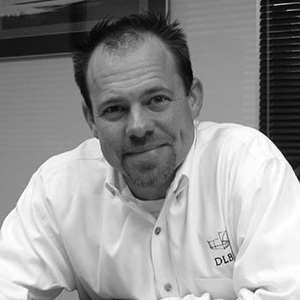DLBA UNIVERSITY
WEBINAR RECORDING
AUTONOMY, A Yacht Revolution
DECEMBER 15th, 2020
In March 2020, DLBA unveiled the 58m AI-powered superyacht concept TEMPO. Our TEMPO project is not about autonomy for autonomy’s sake, but rather the things that autonomy enables: improved safety, efficiency, and reliability that combine to increase the yacht’s operational availability for owners and their guests. Back in March we discussed how this increased operational tempo could be achieved due to the Industry 4.0 revolution, and in particular, how that revolution is rapidly advancing capability with respect to navigation autonomy, equipment health monitoring and mechanical & electrical system automation, and cybersecurity. This webinar will dive deeper into the equipment health monitoring aspects, scratching the surface of the technical talk.
One of the key pillars of TEMPO — and the subject of this webinar — is how the Industrial Internet of Things (IIoT) is powering mechanical and electrical system health monitoring and automation, and what that yields for owners. The sea is a harsh mistress, and superyachts are complex systems prone to failures in the best of conditions. Some of these failures are repeatable, common occurrences (e.g., loss of compression in a diesel engine) while others are rare or even unique. Some failures are identified by obvious signals from a sensor while other failures are complex and can only be understood by synthesizing indirect sensor observations. In the past, the wide variety of possible failures necessitated human crew be available to intervene and correct casualty conditions.
When people talk about “autonomy,” or “expert systems,” or “AI,” they are talking about algorithms. Algorithms, combined with the large-scale machine-to-machine (M2M) communication, allow TEMPO to automatically handle faults during operation, and in some cases prevent those faults from ever occurring in the first place. The heart of TEMPO’s improved engineering reliability is an enhanced, three-stage Condition Based Maintenance+ (CBM+) capability that utilizes a combination of rules-based machine learning and model-based reasoning.
Ultimately, the benefit to owners can be summarized as increased time that the yacht is available operationally, greater safety, and the peace of mind that comes with the yacht’s reliability. In this webinar, Jeff Bowles of DLBA Naval Architects and Dave Schedit of Weather Gage Technologies will explore the potential benefits to yacht owners that can result from embracing this technology, and talk to the basic foundations/architecture of how Artificial Intelligence is applied to achieve these end goals. Vessels systems, sensors, and control algorithms will be introduced and discussed at a high level.
FEATURED PRESENTERS

David Scheidt
Weather Gage Technologies – Chief Executive Officer
David Scheidt is the founder of Weather Gage Technologies, LLC, a firm that specializes in: intelligent fault management, autonomous systems and the test and evaluation of complex autonomous systems. For over 30 years Mr. Scheidt has conducted industrial and government-sponsored research and development in distributed intelligent systems in unmanned vehicles, spacecraft, railroad, public transportation, power distribution, and health informatics. Mr. Scheidt has over 50 peer reviewed publications and in autonomous systems, command and control theory and intelligent control. Mr. Scheidt’s has won numerous awards including the National Performance Review’s “Hammer Award” (twice). Mr. Scheidt’s technical interests are: intelligent control of distributed cyber-physical systems, autonomous unmanned vehicles and command and control theory.
Journal Papers and Book Chapters

Jeff Bowles
DLBA Naval Architects – Director
Jeffrey graduated from Webb Institute in 2000, followed by a Master’s Degree in Marine Engineering from the University of Newcastle Upon Tyne in 2001. In his early career at DLBA, Jeff supported most of the advanced technology projects. Today, as Director, he handles the direction and operation of the DLBA Division.
While working on his thesis at Webb Institute, Jeff’s thesis advisor was Jacques Hadler, whom Donald Blount first worked for at David Taylor Model Basin – a unique coincidence! After graduating from Webb Institute, he interned at DLBA for a third time before heading overseas to obtain his graduate degree. After obtaining his master’s degree, he began working for Donald L. Blount and Associates as a Naval Architect.
Jeff proceeded to publish 14 papers on naval architecture and marine propulsion as he transitioned from Naval Architect to Technical Director, and has presented at conferences and tradeshows worldwide.
When not working, Jeffrey is an avid outdoorsman who enjoys tinkering with his “grown-up” toys and keeping up with the latest sportfishing news. As a kid, he used to go offshore fishing with his family and friends. In fact, his love of sportfishing boats and engineering is the reason he works for DLBA.
Share this article online:
HOW CAN WE HELP YOU?
FEEL FREE TO CONTACT US

DLBA Naval Architects
860 Greenbrier Circle, Suite 201 Chesapeake, Virginia 23320 USA
Phone: 757-545-3700 | Fax: 757-545-8227 | dlba@gibbscox.com
STAY UPDATED
SIGN UP FOR OUR NEWSLETTER
Keep your finger on the pulse of the latest points of focus in naval architecture and engineering: subscribe to DLBA’s concise monthly newsletter. Within it, we briefly describe and picture our latest projects and concepts. We encourage feedback and seek to have our newsletter spark conversation regarding potential collaborations and further advancements as we share our passion for the industry.
